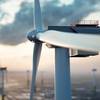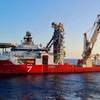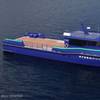Japanese shipbuilder Mitsubishi Heavy Industries, Ltd. (MHI) informs it has received orders for the construction of two next-generation liquefied natural gas (LNG) carriers that will primarily carry shale gas produced in North America.
The shipbuilding contracts, received through MI LNG Company, Limited, a joint venture between MHI and Imabari Shipbuilding Co., Ltd., will see the delivery of one LNG carrier each for two separate joint ventures which Chubu Electric Power Co., Inc. has established with Mitsui O.S.K. Lines, Ltd. (MOL) and Nippon Yusen Kabushiki Kaisha (NYK Line), respectively.
The vessels will be built at MHI's Nagasaki Shipyard & Machinery and are both scheduled for completion and delivery in 2018 when they will commence transporting shale gas produced in North America, mainly carrying the gas from the Freeport LNG Project, an initiative in which Chubu Electric Power is participating.
The project underway at the Freeport LNG terminal is being developed by Freeport LNG Development, L.P. in the U.S. and will establish a new natural gas liquefaction facility to refine and liquefy shale gas and other natural gases produced in the U.S. at a rate of up to 13.2 million tons per year. Commercial production is scheduled to begin in 2018.
The two newbuild LNG carriers will be of MHI’s Sayaringo STaGE design, which MHI says features a more efficient hull structure and hybrid propulsion system for improvements in both LNG carrying capacity and fuel efficiency.
The ships will measure 297.5 meters length overall, 48.94 meters width, 27 meters depth and 11.5 meters draft. The vessels’ width will allow for passage through the newly expanding Panama Canal.
Each carrier will include four apple-shaped tanks, an improved version of Moss-type tanks (independent spherical tanks that are fixed to the hull by a cylindrical skirt) designed with a bulging upper half. Total holding capacity of the tanks will be 180,000 cubic meters. The adoption of a tank cover integrated with the hull structure, developed by MHI with support from Aker Arctic Technology Inc., enables a lighter vessel while fully retaining overall structural strength, MHI said. The new design also reduces wind resistance during navigation.
The LNG carriers on order feature a hybrid propulsion system dubbed STaGE (Steam Turbine and Gas Engines). According to the shipbuilder, plant efficiency has been improved through the use of the engine's waste heat for steam turbine, resulting in a propulsion system enabling high-efficiency navigation throughout a full range of speeds.
MHI noted that it has observed increasing demand for LNG as a fuel for generating power worldwide, Japan included. Meanwhile, LNG produced in North America in tandem with America's "shale gas revolution" is projected to grab an expanding share of the global market going forward, a trend that is resulting in longer LNG transport distances, MHI said. The latest two orders come on the heels of an order for two Sayaringo STaGE LNG carriers in April, preceded by an order placed in January for two next-generation LNG carriers to transport shale gas produced in North America.
Effective October 1, MHI will launch a wholly owned ship construction company and transfer all operations in the construction of large-scale commercial ships in the Nagasaki district to the new entity. Through this initiative its shipbuilding structure will be transformed to focus into the construction of gas carriers, a vessel type in which it excels. Regarding next-generation LNG carriers, the company will pursue enhancement of quality and competitiveness by streamlining production through continuous construction.













